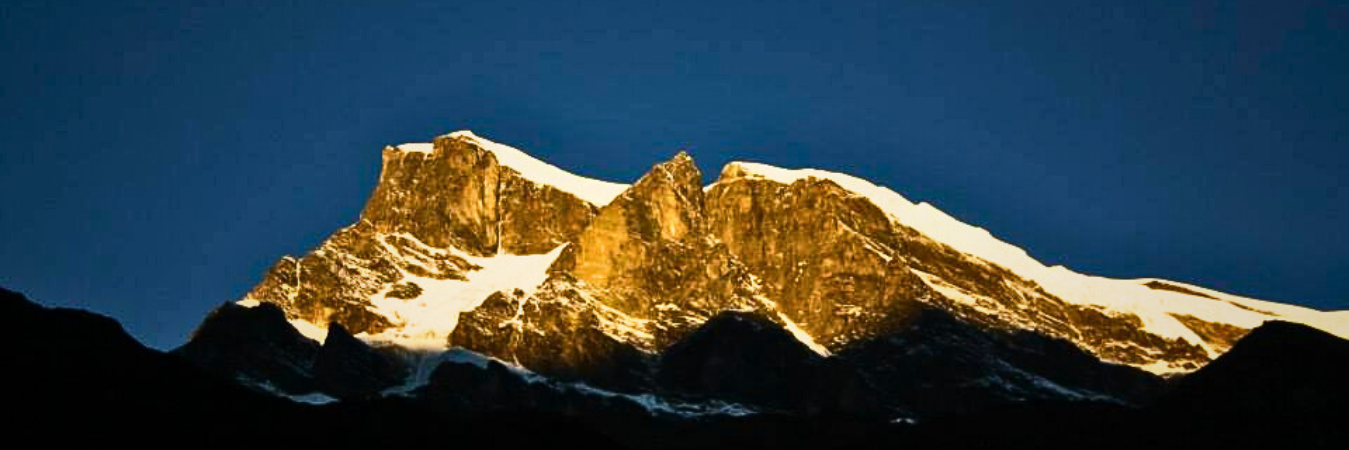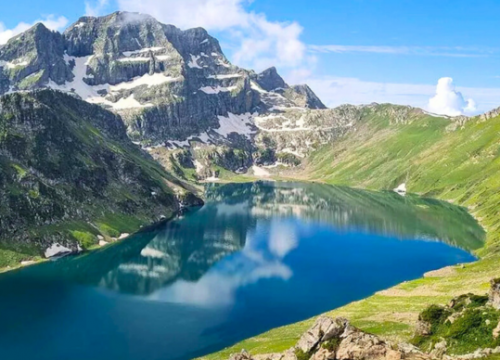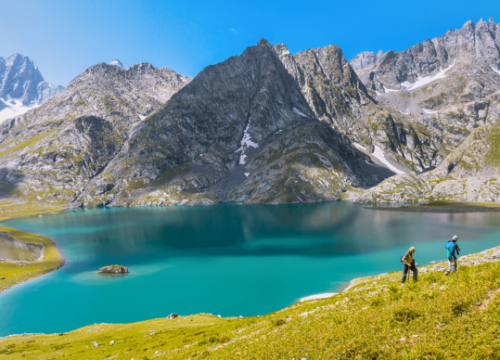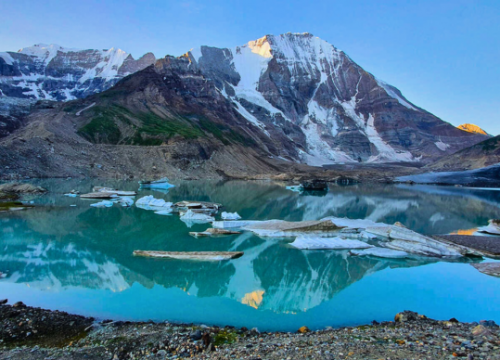The day starts before break of dawn. We gear up and leave our campsite in the dead of the night, at 3AM. There are no water sources on the way and it is an extremely long day, so remember to carry sufficient water. Considering it is summit day, it will be the longest and toughest day of the trek. We eat something and top our bottles before we leave for the night. The trek starts by crossing the open ground of Khulara which starts to climb onto a rocky terrain with a gradual incline. The nights tend to get extremely cold. So, do not forget to layer up adequately.
After an hour of incline on the uneven land, you will hit the meadows. If it is a clear sky, look up to see the wonders of the night – the sky, the stars and the quiet of the meadows bordered by trees is enough to take your breath away if the climb up until now hadn’t done so already. An hour more from here on a gradual incline and you reach the top of the ridge line. There is a small stone temple on top which is where the route for Kuari Pass and Pangarchulla separate. To summit our peak, we take a left from the temple and start to walk the long and steep walk up the ridge of the mountain. There are three ridgelines we will walk before we hit the next section on the trail. The walk on the ridgeline is especially challenging because it is completely exposed and hence extremely windy, with no way to protect yourself or guard against the chilly winds. There are a few small sections of descend on this patch which is a welcome change after steep inclines going up. The peaks appear to be ghost-mountains with their faint greyish outlines fogged out in the mist of the night.
Once off the ridge, the sun starts to make an appearance by around 6AM. The changing colours of the sky and the way the majestic peaks react to the sun’s movements is something you don’t want to miss. Three and a half hours into the climb, we hit the hardest part of the entire summit push. Remember, we are climbing a total of close to 1,200M today and are expecting to reach the summit latest by 11 am.
By 0730 AM we reach the boulder section of the climb – the hardest bit. The rocks here are very stable so once you learn how to use them to move forward, it gets much easier. It will take close to an hour and a half to get from the start of this section to the bottom of the peak. This is relatively flat but requires extreme caution for the boulders have massive gaps between them which could cause a lot of damage in the case of a slightest misstep.
Note: The terrain is very different in both seasons. During March and April, this section of the climb receives a thick sheet of snow making it a flat and massive snow field which is much easier to navigate and is likely to be faster to cross. During Oct-Dec, the snows melts away exposing the boulders underneath.
From the bottom of the peak, it is a steep climb up all the way to the summit. This, too, is rife with boulders which makes the climb slower in winters. During peak season (march and april), however, it might be a bit faster for snow is relatively easier to walk on. Based on the speed of the climbers, this last section up is likely to take anywhere between 2-3 hours. It is demanding and requires a lot of internal motivation. Expect to reach the summit by 11AM.
The tiny parts that were previously hidden are now completely open and you can see the entire Garhwal Range from where you stand. The force of the mountains surrounding you has the power to fill you up with energy, if you feel drained at all from this arduous climb. After a short prayer on the temple at the summit, prepare to start your descend. This is going to take really long too, and you might want to cross the most precarious sections before the sun starts to make the snow unstable.
We follow our footsteps back down the mountain. The climb down might seem endless because it takes a lot of effort to descend these almost blindingly steep slopes. Expect to reach the end of the boulder section at the mark of three hours. And three more hours to get to Khulara.





